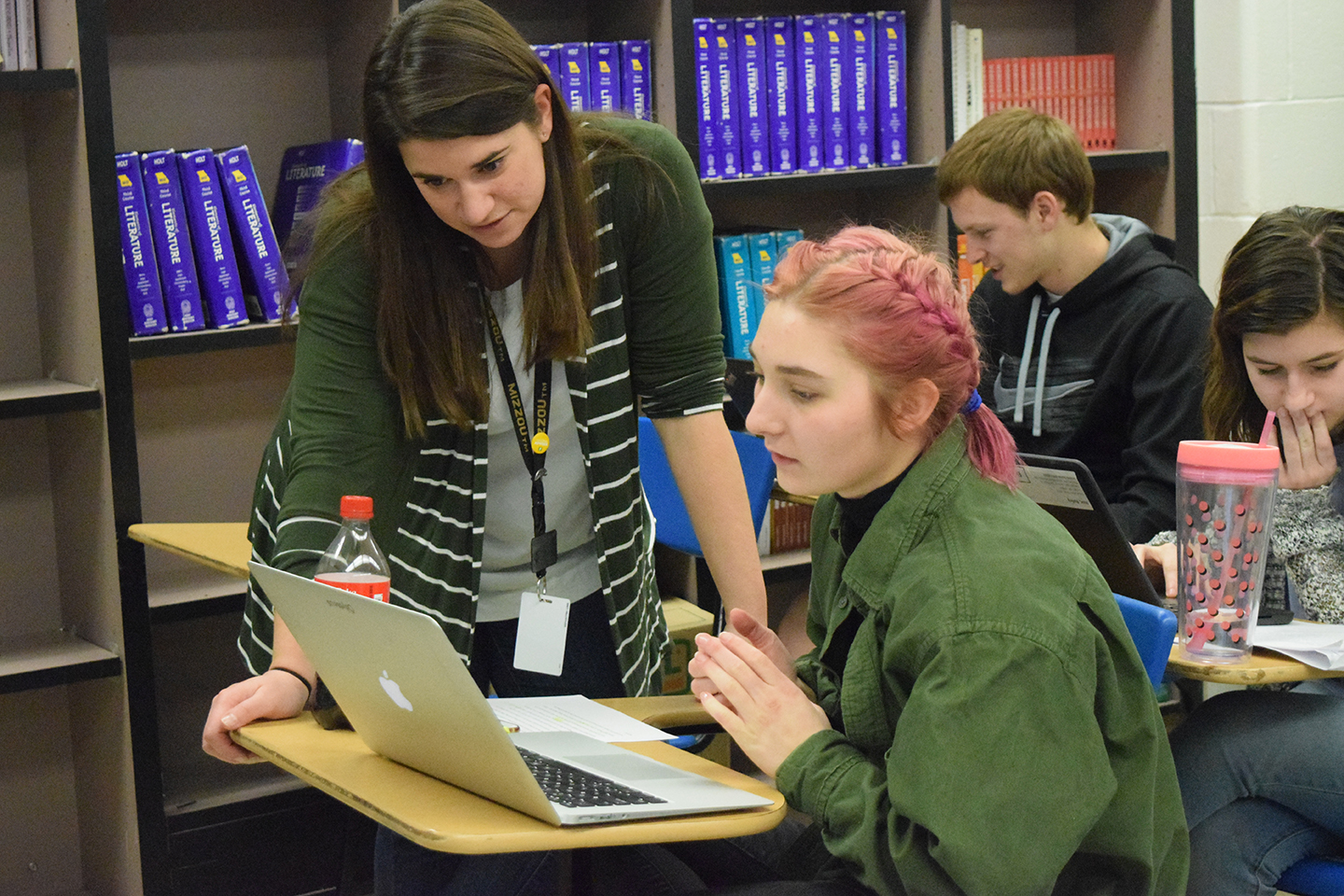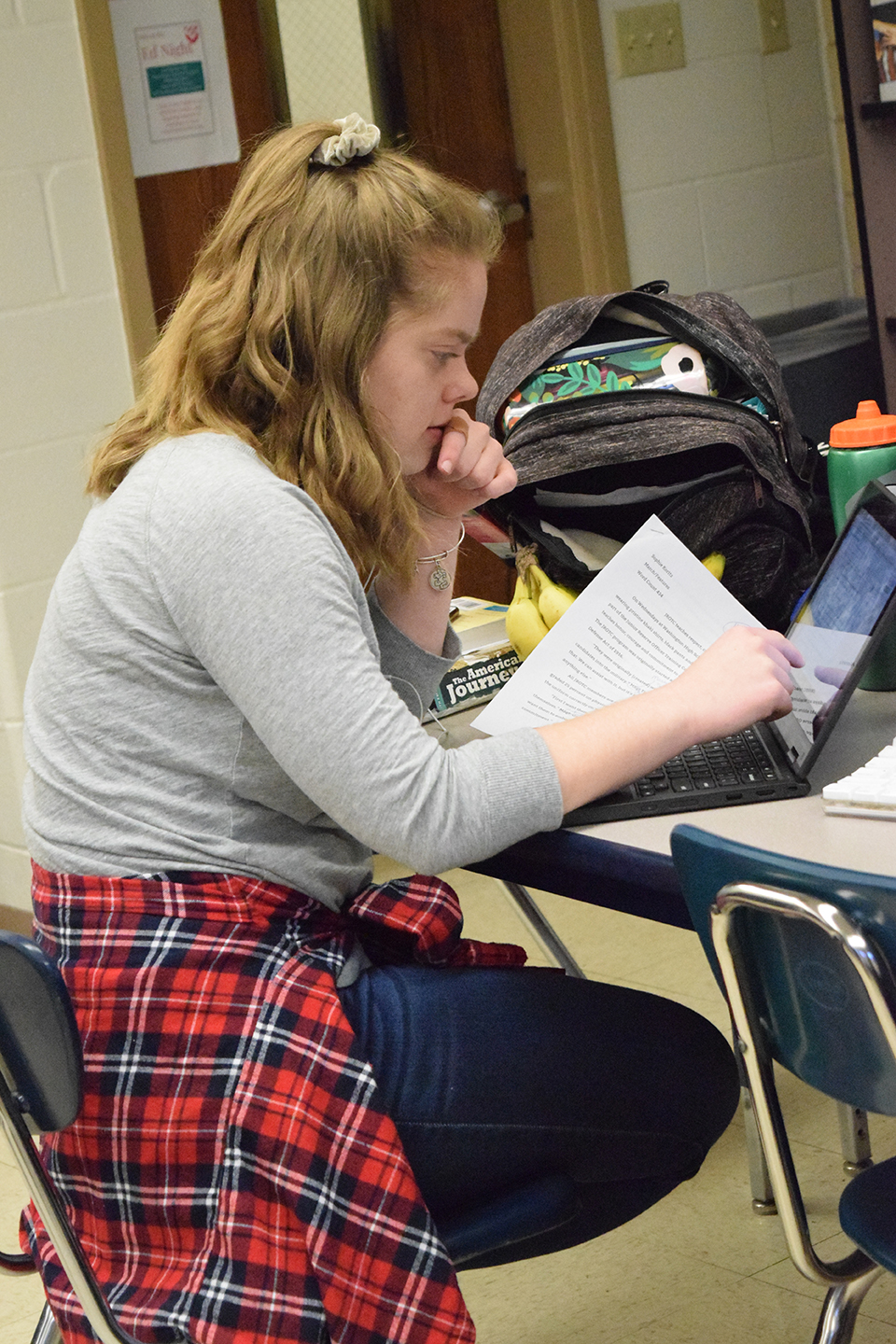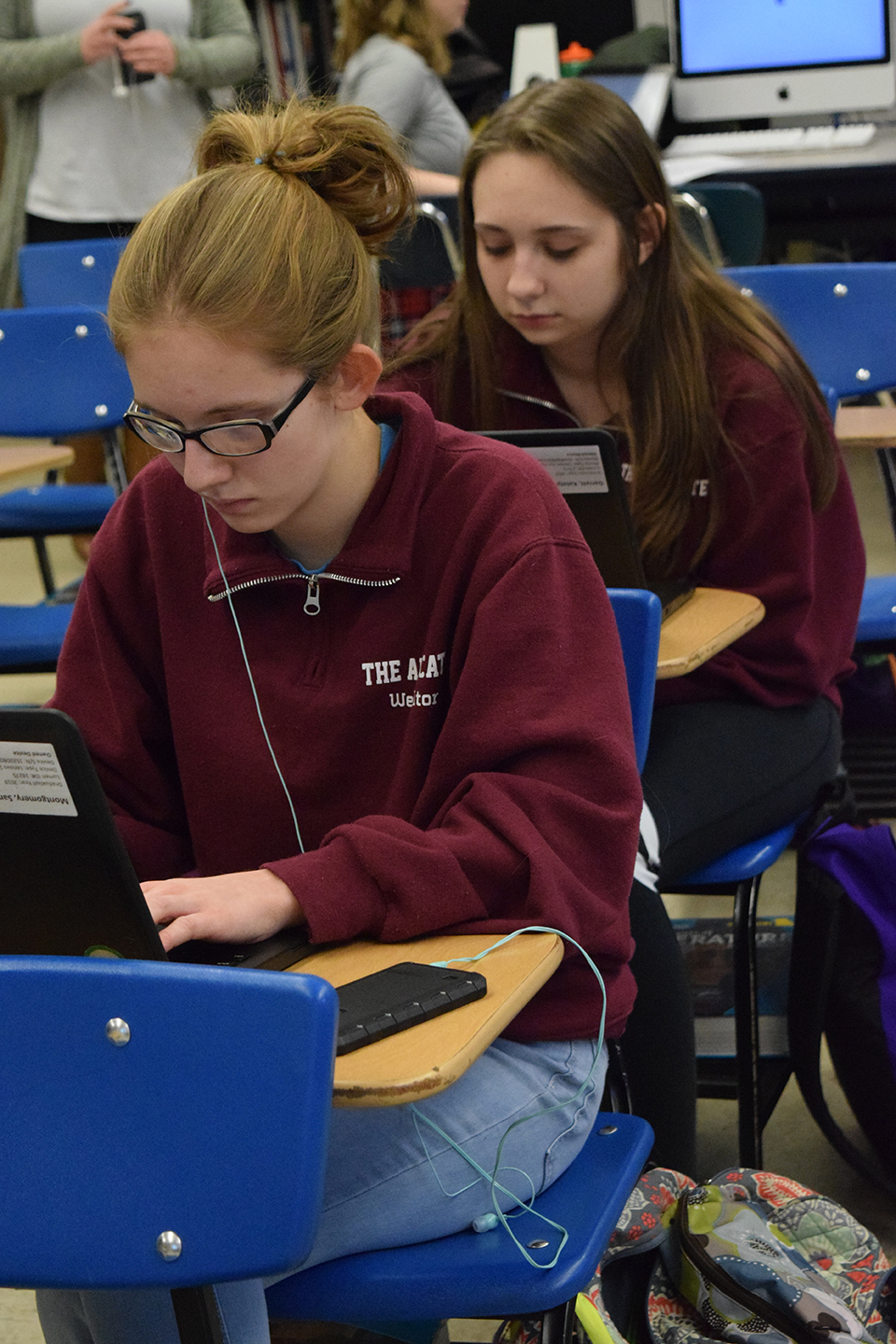Creating an Online News Site
When I first started advising newspaper, an online news site was already part of the class. There was just one issue: despite being a journalism major in college, I didn’t have a lot of experience with managing a website. The previous adviser left me some notes and passwords for the site, but even with that, it was still a bit stressful. Luckily for me, my editors and returning students were able to guide me in the process of running our publication, as well as our website.
 When I took a job advising at a different high school, however, there was no online news site, so when my students asked if we could get one, I had to start from scratch and figure out how we were going to incorporate the website into the system we already had in place while making sure I wasn’t creating an unmanageable amount of work for myself.
When I took a job advising at a different high school, however, there was no online news site, so when my students asked if we could get one, I had to start from scratch and figure out how we were going to incorporate the website into the system we already had in place while making sure I wasn’t creating an unmanageable amount of work for myself.
GETTING IT SET UP
No matter your budget, there are a lot of great hosting sites available, WordPress, Weebly, SNO Sites, Blogger, so it’s just a matter of finding which site would be best for your program. Some sites offer existing templates you can easily customize for your publication while others offer more freedom in design.
Conduct some research first (preferably with your staff) of other online publications as well to get an idea for what is practical for your program. A great place to start is NSPA’s Best of Show award winners.
Once you choose a site, then it’s just a matter of getting it set up.
- Choose a URL and publication name that complements your existing publications. You don’t want to confuse your readers.
- Set up your design elements.
- Create your staff accounted and publication pages so your staff can access the site and all legal/contact information is available.
INCORPORATING THE SITE
 Starting Tasks
Starting Tasks
Start small. The last thing you want to do is end up creating another publication class inside of an already existing publication class, so don’t ask too much of your students in the beginning.
I had a staff of 16 when we first started our website, which is a small staff compared to many programs. Once all their profiles were set up, I had my students post all their stories from that year and previous years, if applicable, online just to build up content.
This was the only time I published online what was also published in print unless the print story had media components not feasible in print. However, decide for your publication what would be the best for your program.
Deadlines
After we had enough content built up, each staff member was required to post one story online per month that differed from content covered in our print publication.
Originally I did not set specific dates for each student; they just had to be published by the end of the month, but now, each student has to choose a three-day window of when their story will appear online. This allows you to make sure you have constant media coverage online. A wall calendar or Google calendar helps keep you and your staff organized with your print and online deadlines.
Content
Every month, my staff conducts a brainstorm where they share story ideas that they come up with and then we discuss them. Sometimes the story angles that they generate lend themselves better to online than print, so we just move them to that category. While many students know right away what they want to cover in that month, sometimes students struggle.
I give them a few days if they don’t have an idea right away, and then we conference together to come up with something. For my own organization, I get a document that lists the angle of online stories for each student so that no one accidentally duplicates content.
You want to make sure, too, that you are still offering a variety of content on your website and that the stories are still adhering to journalistic standards like timeliness, relevance, etc..
Also, my staff members cannot write the same type of story each month (feature, news, sports, opinion, entertainment). Really, by the end of the year, they should have written at least one of every type of story for online.
This year, we are also going to try to incorporate small feature videos to get more multimedia coverage online so my reporters get some experience with film editing. To start, students will work in teams of three so they aren’t overwhelmed, and new staffers will be paired with veteran staffers. If you have the capability, have students report together on larger stories with the technology you have available.
One thing to keep in mind when deciding on content for your website is that this site offers so many more opportunities than print publications, so get creative and take risks. I allow a photo gallery or interactive post to count as a story, or even live tweeting at an event. If your staff wants to try something new, let them. Just make sure that your expectations are clear and they meet their deadlines.
EDITING AND GRADING
 My normal print stories go through three revisions. However, to do that for online stories is a bit time-consuming.
My normal print stories go through three revisions. However, to do that for online stories is a bit time-consuming.
If a student is struggling, then the page editor or myself will sit down with them, but for the most part, once students have their stories finished, they post them in draft mode on our website and then I go through them and edit them before publication. If you have a large staff, you can assign a copy editor to do this instead, but I like to make sure I read through everything at least once before publishing just to make sure.
Depending on your program and your grading system, yours might be very different than mine. For our print stories, first and final drafts are worth 25 points, and second drafts are 50 points. For online, each monthly story is worth 50 points, without any additional edits. They must also include a visual element and caption for each story, which is an additional 15 points. This means that throughout the year they are racking up a lot of points, but so long as they stay on top of deadlines and have solid content, their grades are not hurting.
AFFORDING THE WEBSITE
If your publication is like mine where you are fully self-funded, then advertising is going to be the best thing for paying for your publication. However, your staff will have to come up with a way for this advertisement to work for you and your community.
For our publications, selling ads in a smaller town can be a bit difficult since every program in our high school is hitting up the same local businesses for money.
The last thing we want to do is make our current print ads more expensive or have an online option that is too high to attract any potential sponsors. However, we still need that $300 to pay our yearly website maintenance fee. We’ve come up with a quick solution, though. Since we offer a discounted rate for advertisers that purchase an ad in each of our seven print publications, we thought we would do the same with online— $10 a month or $50 for the entire school year. In the first year of having our website, all advertisers who purchased an online ad chose the discounted option, and we only needed six of them to cover our cost, which was even better.
If your site is not capable of posting ads or if for some other reason you are unable to, try selling small sponsorships to companies or individual people. You can have a tier format (i.e. silver, gold, platinum) for varying amounts of money ($10, $25, $50), and then you can just lists those names on a page on your website. You might have to contact more people for this to cover the cost of the site, but with a cheaper cost, it might not be so difficult to gain sponsorships.
OTHER TIPS AND TRICKS
Make tutorials as you learn how to do things
My publications have their own Google Drive accounts, so instead of creating a binder with printed tutorial information, we have a document where we list step-by-step directions with links to videos or other resources.
That way, when a student forgets how to do something or when we change staffs each year, they can just check the document. Many hosting sites also have excellent tutorial information, so if you don’t know how to do something, have your students look there first.
Assign a website editor
I was lucky the first year we created our website that I had a staff member who was really into computers and knew quite a bit about coding who was willing to take over the behind the scenes aspects of the website throughout the year (updating design elements, helping students with technical issues, researching different interactive methods we could try, adding tutorial content, etc.). The issue was that he was a senior and I didn’t have anyone to fill his shoes after he graduated.
However, one of my new staffers expressed interest in helping with the website despite not having any coding or computer programming knowledge. In the end, it didn’t really matter. She was driven and had clear expectations of what her goal was, so by using the tutorials listed above and just the power of a little research, she was able to take over the small but crucial tasks of the website without much assistance from the adviser.
Collaborate with your school and journalism programs
If you have a broadcast or radio program at your school, combine the productions for your online site so you can provide more coverage and content on one platform.
You can also talk with the theatre director, club sponsors, athletic director, etc. to see if they want to submit media to post or want to collaborate. Also, reach out to your English department.
If it works for your school, collaborate with teachers to have students submit their own print or multimedia stories they created for class. If your school is really big into PBL, this is a great way to present student work with an authentic audience. My English chair was really helpful in finding a way to get more students to read what was posted, especially since I teach English I and II in addition to journalism. For example, when my students are learning how to write engaging hooks or persuasive speeches, I pull up examples from the newspaper website or have students explore the leads and opinions articles so they can see solid student work written by their peers.



Tadeusz • Jan 25, 2025 at 1:30 pm
Hi bro, I am going to run the newspaper in collage in Poland. Thanks for advice!
Rosalind Robertson • Aug 26, 2018 at 10:43 pm
What is the name of your website?
Many thanks!
Roz
Christina Manolis • Sep 6, 2018 at 7:41 am
Our website is whsadvocateonline.com
I hope this helps. (Sorry for the late response)
Cindy Pittman • Aug 10, 2018 at 11:56 am
Thank you so much for this article! I am a teacher in a small rural school in western Washington State. I have been assigned to teach a journalism class this coming school year. Administration would like an electronic news paper for our school and community (they would like the community to be able to access the newspaper via our school district website.) I am currently reading as much as I can about teaching journalism. I am so thankful to have found this website, and I’m thankful to teachers like you who take the time to explain what you’re doing and how you do it.
If you have any advice on getting started, please let me know, or point me in a direction where I can find guidance. Oh, and it looks like there will be 22 students in the class.
Thank you,
Cindy Pittman
Christina Manolis • Sep 6, 2018 at 7:42 am
Hi Cindy,
I apologize for just now seeing this. If you have any other questions or would like any help, please do not hesitate to contact me at [email protected]
I hope that the beginning of your school year has gone well.